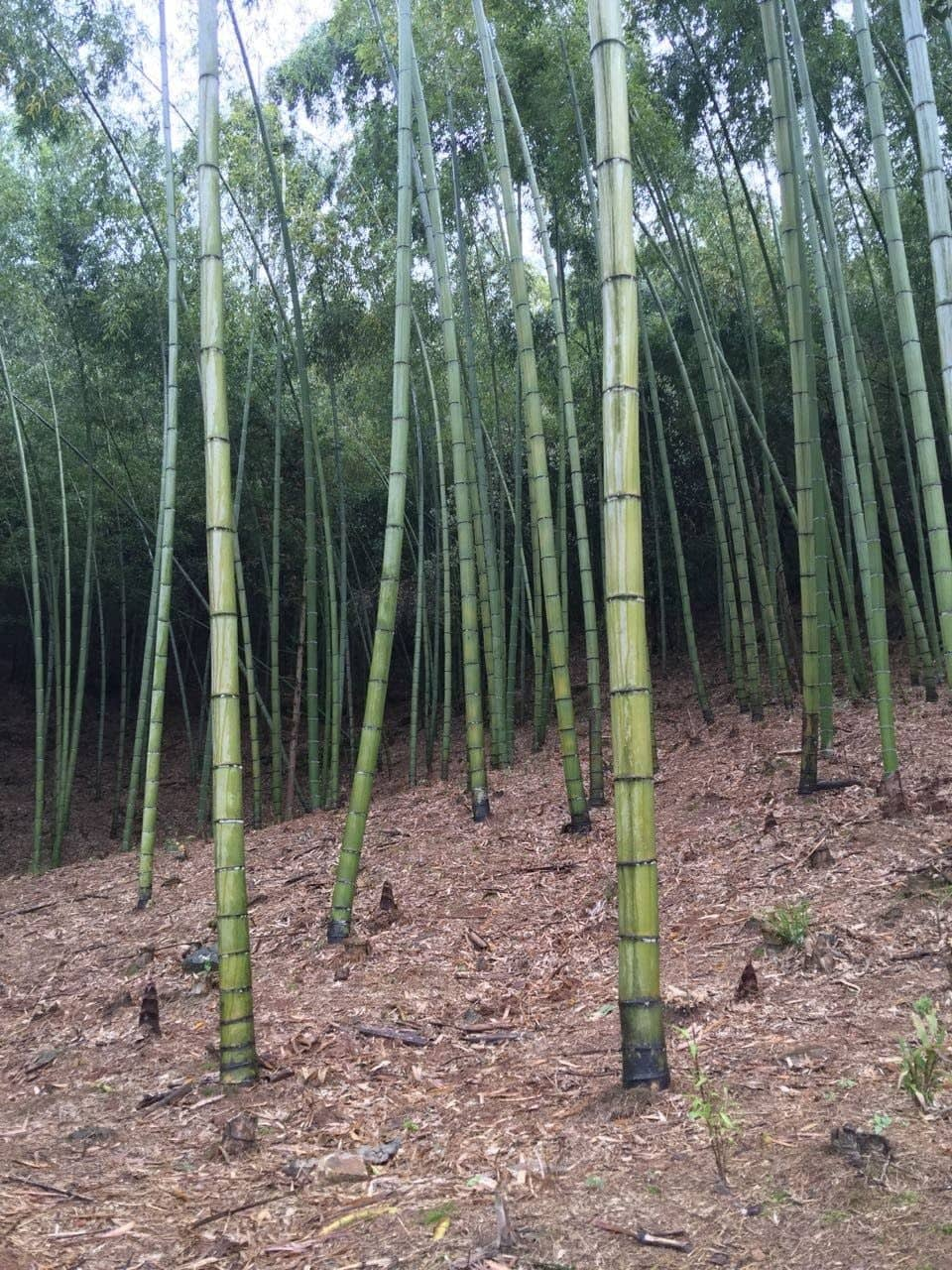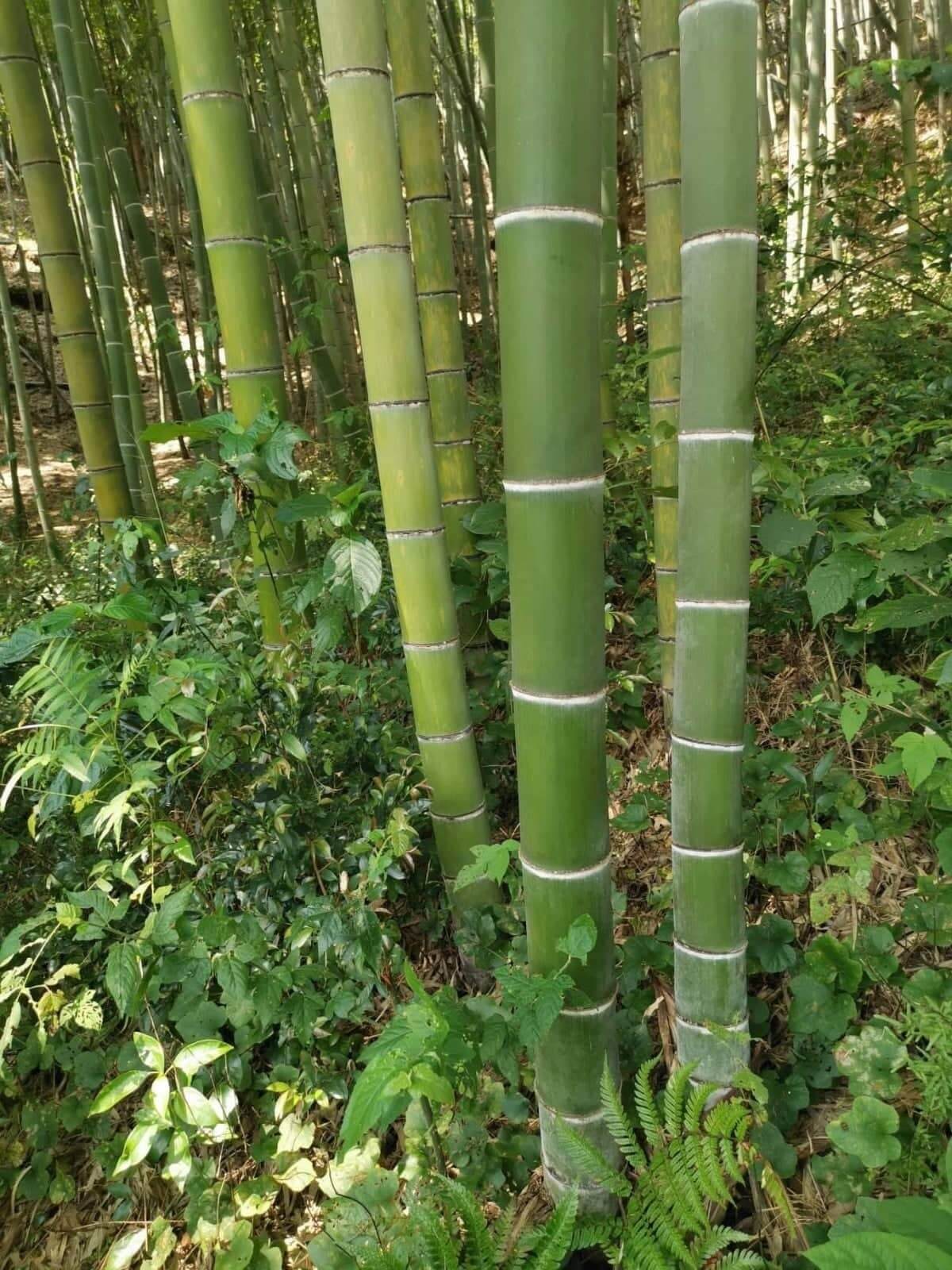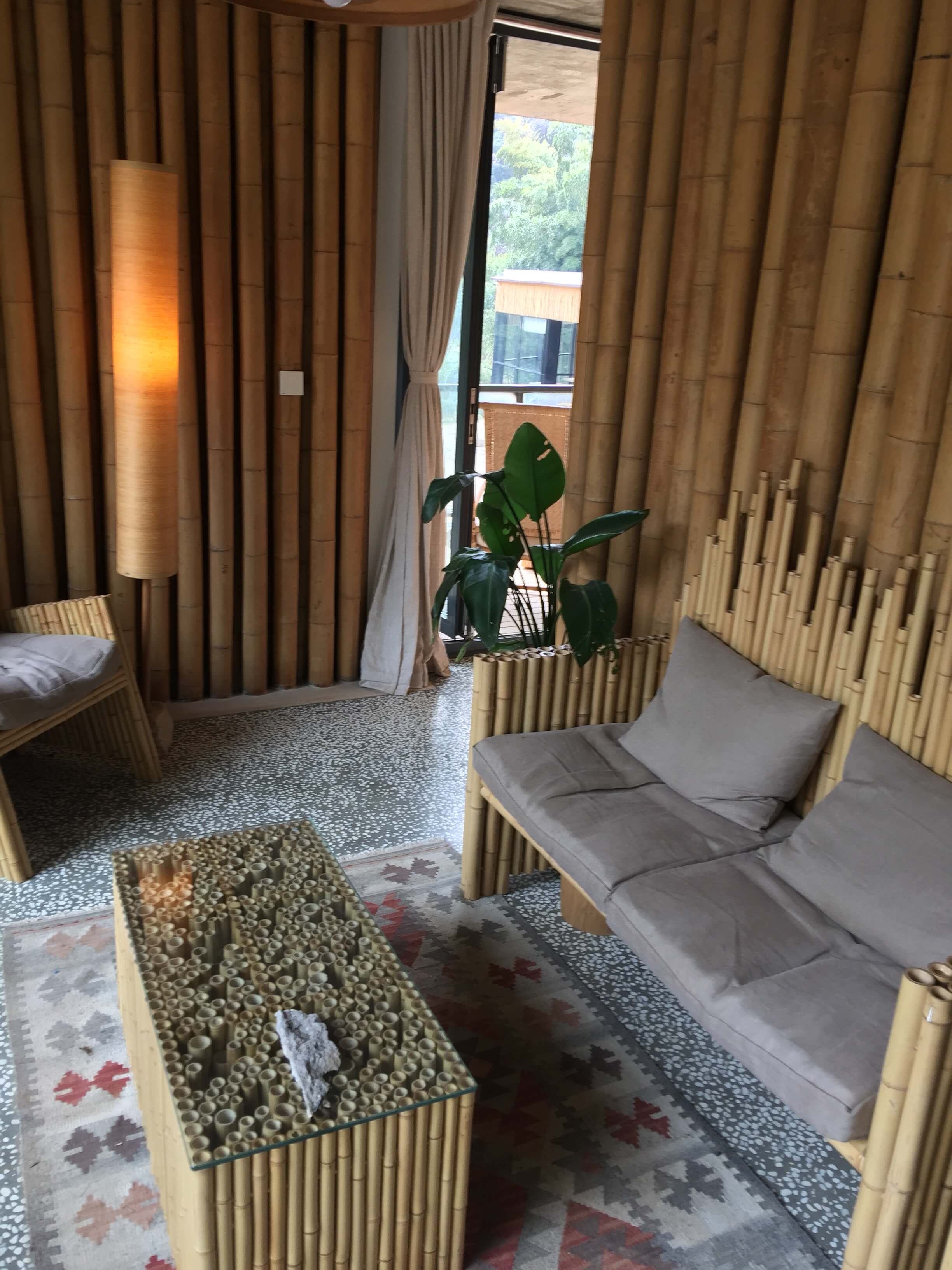Ningbo - China - in a bamboo "forest"
The beginning of September, Sunday, the rainy season is slowly coming to an end.
This is the perfect time to go to the forest, bamboo forest. Just right now. Are we sure we can say to the bamboo forest?
Given the biological origin of bamboo, it would be more appropriate to invite you to a bamboo meadow. After all, bamboo is panacea.
But has anyone seen a meadow with grass 50 meters high? No? Exactly.
As we distinguish between grass bamboos and woody bamboos, both forms are therefore correct.
If we only took into account the appearance of the space in which bamboos grow, I would definitely say ... I invite you to the bamboo forest.
Bamboo is indeed a phenomenon. Not only is it a common plant from the northern borders of China to the southern tip of the Indonesian islands, it is a plant that grows very quickly.
In short, outside of Europe and Asia, bamboo grows everywhere and is a plant that has 1000 different uses.
The most famous and perhaps the most photographed bamboo forest is the bamboo forest in Kyoto, Japan, at the Arashiyama train station.
Pictures of monumentally tall bamboo trees around the paths leading through the forest can be seen almost every day in dozens of publications.
No less spectacular forests can be seen in the vicinity of Shanghai, namely Ningbo, where thousands of hectares of nearby hills are overgrown with bamboo forests.
Bamboo is a plant that is widely and daily used in Asia.
If you remember from school or you just know, trees in Europe grow on average 40 to 50 years to reach their productive maturity.
Only poplar stands out among all technically useful trees, with a growth period of about 10 years (it is also a fact that it does not have many uses).
And now you can imagine what a wonderful raw material bamboo is. It is widely available, undemanding, reaches its technical value as a raw material at the age of only 3-5 years and almost every part of it can be used.
With this knowledge, the perception of bamboo from the point of view of industry becomes very meaningful.
It's just the fastest growing tree, okay, the world's grass.
Moreover, the use value of bamboo is not only the main stalk, it is also the leaves and roots (rhizomes) that can and serve as animal feed. Young, sprouting bamboos occupy a well-deserved place in Asian cuisine as ingredients in soups and salads.
Did any of you know that the tensile strength of bamboo is greater than that of steel? I don't think so. This is the fact. Bamboo also serves as a building material.
Inhabitants of Central and Eastern Asia or East Asia use mature bamboo trunks as structural elements of walls, ceiling carriers, elements of bridges and scaffolding, and many other elements of construction infrastructure.
Bamboo is also a raw material for the production of glued boards, from which we can produce any items, and this raw material is slowly becoming more and more common in the global economy.
Due to the fact that bamboo can be formed and the shape is fixed when wet, it is also possible to make objects with multi-shaped compositions and furniture from bamboo.
The forest "growing in the eyes"
As already mentioned, bamboo grows very quickly and reaches its useful value after a few years. However, it is interesting that the growth of bamboo in some varieties reaches 5 cm per hour. This gives a daily gain of 1 m!
So you can say that the bamboo forest "grows in your eyes."
If we assumed that bamboo would grow continuously, it would reach the height of Mt Everest after about 24 years.
And a surprise. Bamboo doesn't last that long.
Growth continues for several months while the plant reaches 90% of its height. After this time, it stops growing. The most frequently reached height is from 20 to even 50 meters. The following years bamboo strengthens its stalk and becomes thick.
It is related to the structure of bamboo, which is characteristic of grasses. The grass just grows until it blooms.
It is similar with bamboo. Bamboo grows until it begins to bloom. Some species of bamboo bloom after a few years and some after several years. There are also varieties that bloom after 60 years. However, the growth itself stops when it reaches maturity for seed production.
Interestingly, the bamboo forest grows very evenly. Plants grow and mature to release inflorescences after several months. They then bloom and shed seeds. This is a turning point for this plant. The bamboo simply dies after shedding its seeds.
The view of the forest that has just "matured" is amazing. Within a few weeks of shedding the seeds, all bamboos turn yellow, making them an ideal raw material for industry.
Initially, such dead forests full of yellow bamboos were considered a disease. However, after many years of research on this plant, it turned out that it is simply a natural process of aging and dying bamboo.
Besides being the fastest growing tree or grass, bamboo plantations emit 35% more oxygen and “consume” more carbon dioxide from the atmosphere than standard forest areas.
For this reason, the environmental utility of this plant cannot be overestimated.
The grow of bamboo is also quick. Young trees sprout from seeds coming up after just one rainy season.
Therefore, it is not only a great renewable resource, but also a great regulator of carbon dioxide and oxygen content in the atmosphere.
Today, the world area of bamboo plantations is about 20,000,000 hectares. In many regions of Asia, this type of cultivation is emphasized, as the raw material obtained from the bamboo forest can serve many purposes, it is renewable and at the same time very quickly replaced by a new generation.
Finally, a somewhat dramatic story about the use of bamboo in torture in Asia.
Imagine the Middle Ages. The criminal or the enemy is sentenced to death. But not by beheading the head with an ax, not by shooting or hanging, no, not that way.
In Asia, for this type of execution, bamboo was used in such a way that the body of a convict was stretched over rapidly growing bamboo, which at the rate of 4 cm per hour simply slowly penetrated the body of the condemned man. You admit that it was probably not a pleasant experience.
These are the facts about this tree, not the tree, grass, not the grass, simply the bamboo.
I encourage you to visit the Bamboo Forest in Kyoto or one of the many bamboo forests throughout Southeast Asia.
After all, it is an exotic place for Europeans in its appearance, and also an area with the highest concentration of oxygen.
And believe me, bamboo trees look great in their multitude. Beautifully green, leaves rustling to the rhythm of the wind, with the echoes of the breaking blades of this unusual plant.
Do you remember that song by VOX? Bamboo song.... cha cha cha.
More new articles
Pages created with WebWave















